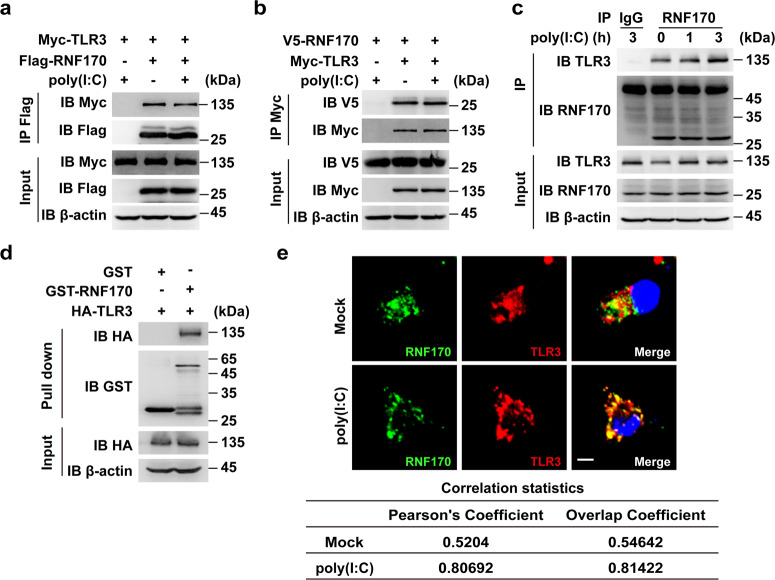Fig. 1.
RNF170 directly interacts with TLR3. a, b HEK293T cells were transfected with Myc-TLR3, Flag-RNF170, or V5-RNF170 for 24 h, stimulated with poly(I:C) for 3 h and treated with MG132 (3 μM) for 7 h. Cell lysates were immunoprecipitated using an anti-Flag or anti-Myc antibody, followed by immunoblot analysis using the indicated antibodies. c RAW264.7 cells were stimulated with poly(I:C) for the indicated times. Cell lysates were immunoprecipitated using an anti-RNF170 or control IgG antibody, followed by immunoblot analysis using the indicated antibodies. d HEK293T cells were transfected with an HA-tagged TLR3 plasmid. After 24 h, cell lysates were incubated with purified GST or GST-RNF170 proteins and subjected to GST pull-down assays. The immunoprecipitated proteins were analyzed by immunoblot analysis with the indicated antibodies. e Peritoneal macrophages were stimulated with or without poly(I:C) for 1.5 h, and then the cells were immunostained with the indicated antibodies and analyzed by fluorescence microscopy. Scale bar, 5 μm. The statistical analysis of the signal correlation between RNF170 and TLR3 was shown in the lower part of the panel. Data are representative of three independent experiments (a–e)

